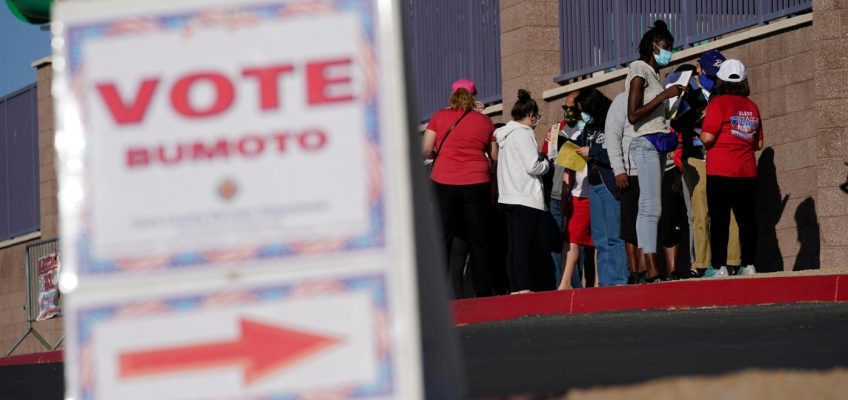Drew Hawkins, Gulf States Newsroom | (TNS) KFF Health News
For Roderick Givens, a radiation oncologist, the expansion of Medicaid isn’t just a policy issue. He practices medicine in a rural area in the Mississippi Delta and he sees daily how Medicaid coverage could help his uninsured patients.
“I can’t tell you the number of patients who I see who come in with advanced disease, who have full-time jobs,” Givens said. “They haven’t seen a physician in years. They can’t afford it. They don’t have coverage.”
This spring, the Mississippi Legislature considered but ultimately failed to expand Medicaid, which would have extended coverage to around 200,000 low-income residents. Mississippi is one of 10 states that haven’t expanded Medicaid, the state and federal health insurance program for people with low incomes or disabilities.
Seven of those states are in the South. But as more conservative-leaning states like North Carolina adopt it, the drumbeat of support, as one Southern state lawmaker put it, grows louder.
Advocates for expanding Medicaid say opposition is largely being driven by political polarization, rather than cost concerns.
Givens, who is also chair of the board of trustees for the Mississippi State Medical Association, which supports Medicaid expansion, said the federal government would pay for the vast majority of it and that most Mississippians support it. “Why does that not translate when it comes to policy?” Givens asked. “It’s called the stupidity of politics. Period.”
Givens pointed to Arkansas as a potential model for Mississippi because the state has similar demographics and expansion has been in place there for a decade. “Look at what has worked for them and what needs to be tweaked,” he said. “For me, that’s just common sense.”
In states that have not expanded Medicaid, hundreds of thousands of people fall into the “coverage gap,” meaning they earn too much to qualify for Medicaid but are not eligible for subsidies to help pay for private insurance. Those in the coverage gap also can’t afford premiums and other out-of-pocket expenses on employer-sponsored insurance even if they are eligible.
The coverage gap is not an issue in states that have expanded Medicaid. In those states, a single person making up to 138% of the poverty level, or about $20,000 a year, can get on Medicaid. Someone making more than that can get subsidies for private health insurance.
For the first time in Mississippi, both the state Senate and House of Representatives proposed expanding Medicaid during the legislative session that ended in May. In the end, the efforts fizzled at the last minute.
Had the proposed bills succeeded, some 74,000 Mississippians who are stuck in the coverage gap would have gained access to Medicaid.
The House speaker, Jason White, a Republican who supports expansion, acknowledged the political hurdles. “It’s President Obama’s signature piece of legislation. It’s known as Obamacare,” White said. “So, there are a lot of political dynamics centered around it that probably never allowed it to get off the ground.”
White said this year was different because of increased support from the business community.
“I kidded some of my fellow Republicans. I said, ‘Come for the savings, if you will, and then you can stay for the salvation and the good things that it does to improve people’s lives,’” White said. “If you can’t get there because it’s the right or compassionate thing to do to help these individuals, get there because it makes sense from a business standpoint.”
In neighboring Alabama, politics also thwarted attempts to provide more health care this year. Although the state legislature didn’t vote on any direct expansion bills, there was an attempt to include expansion language in a bill about casino gambling — specifically, a provision to allocate some gambling profits to rural health systems.
Ultimately, the Alabama bill was stripped down, and the funding for rural health was removed.
If Alabama expanded Medicaid, at least 174,000 more people would be covered, according to KFF. But the connection to Obamacare remains a stumbling block in Alabama’s Republican-dominated state legislature.
“Just the partisan nature of this is definitely a problem,” said Regina Wagner, an assistant professor of political science at the University of Alabama. Wagner said that most Alabama voters support expansion and that other states have adopted the programs after mounting public pressure.
“A lot of rural voters are Republicans. And so your own constituents are being hit by this and you’re not addressing it,” she said. “If the pressure gets high enough and sentiment shifts, maybe that’s going to be enough to push them.”
The main disagreement in the Mississippi Legislature revolved around work requirements — recipients would have to show they were working part-time or in school.
White said many of his Republican colleagues view extending health coverage through Medicaid as “some form of welfare, some form of giveaway, some form of expanding government.”
Opponents of Medicaid expansion in Alabama are also concerned about potential impacts on the workforce of what they call free health care.
“If you open up this federal subsidized program for hundreds of thousands of people, then it could actually hurt that labor participation rate, give them another reason not to go to work, to stay at home,” said Justin Bogie, senior director of fiscal policy at the Alabama Policy Institute, a research group that says it is committed to limited government.
The federal Centers for Medicare & Medicaid Services, or CMS, would have to issue a waiver to allow an expansion plan with a work requirement — something the Biden administration hasn’t done for any state.
This spring, Mississippi came close to a compromise bill that included a work requirement, something that needs a CMS waiver. Had the bill passed and CMS denied the waiver, expansion still would not have taken effect, and the state would have had to apply for the waiver from CMS every year, hoping for approval under a future — potentially more conservative — presidential administration.
That’s what happened in Georgia. In 2020, the Trump administration approved a waiver for a work requirement as part of a limited expansion effort. CMS later rescinded the waiver under the Biden administration, leading to a lawsuit. A federal judge ruled in favor of Georgia, reinstating the work requirement provisions.
However, only about 2,300 people are enrolled — which is fewer than half of 1% of the more than 430,000 uninsured Georgia adults who could gain access if Medicaid were fully expanded, according to KFF. The state’s alternative expansion plan has cost taxpayers at least $26 million, according to KFF, with nearly all of it going to administrative and consulting fees, not medical care for low-income residents.
As public support for expansion continues to grow in holdout states, North Carolina, the most recent Southern state to pass Medicaid expansion, may offer a glimpse of the future. Since its adoption last year, more than 600,000 people have become eligible.
“But it still took a long time,” said Robin Rudowitz, a vice president and director of the Program on Medicaid and the Uninsured at KFF, a health information nonprofit that includes KFF Health News. “It took the governor who continually supported expansion, and the legislature finally came to endorse and pass the expansion.”
Rudowitz said the fiscal incentive under the American Rescue Plan Act played a role in moving the needle in North Carolina and could help ignite debate in other holdout states. But ultimately, she said, the reasons the Affordable Care Act was established continue to be the strongest motivators.
“Without expansion, there are more people who are uninsured. Hospitals and other providers are not able to get reimbursement because individuals are uninsured,” Rudowitz said. “Those are the underlying issues that existed pre-ACA and continue to exist, particularly in states that haven’t adopted expansion.”
____
This article is from a partnership that includes the Gulf States Newsroom , NPR , and KFF Health News.
___
(KFF Health News is a national newsroom that produces in-depth journalism about health issues and is one of the core operating programs of KFF — the independent source for health policy research, polling and journalism.)
©2024 KFF Health News. Distributed by Tribune Content Agency, LLC.




